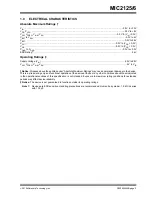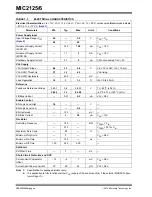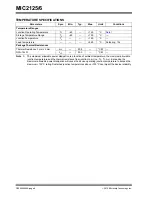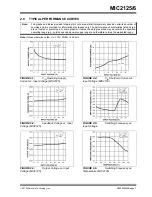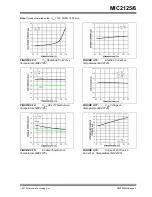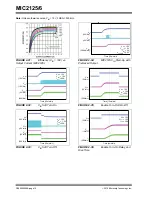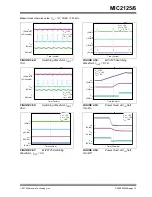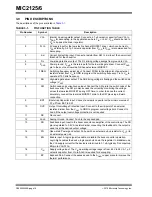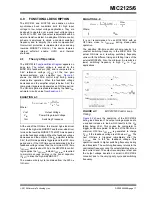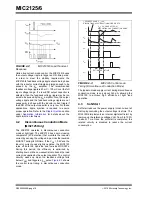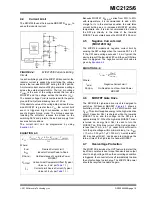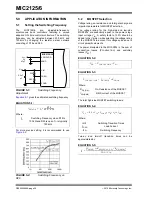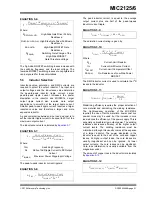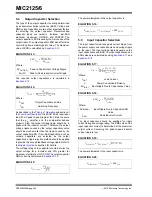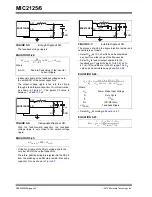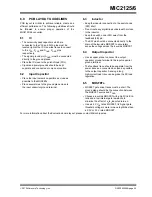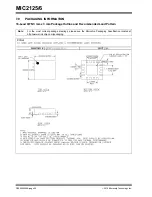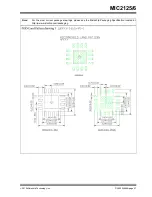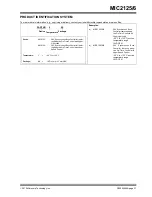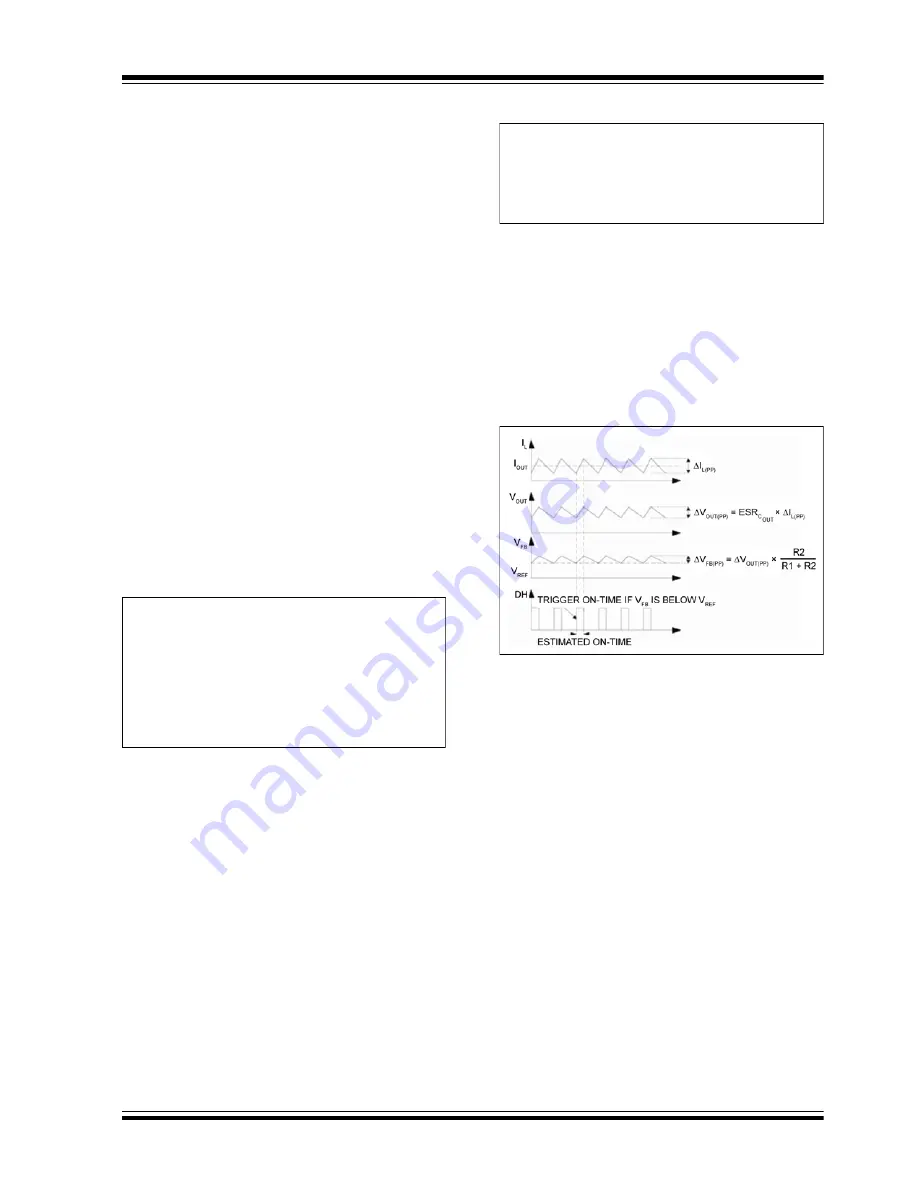
2015 Microchip Technology Inc.
DS20005459B-page 17
MIC2125/6
4.0
FUNCTIONAL DESCRIPTION
The MIC2125 and MIC2126 are adaptive on-time
synchronous buck controllers built for high input
voltage to low output voltage applications. They are
designed to operate over a wide input voltage range
from 4.5V to 28V and their output is adjustable with an
external resistive divider. An adaptive ON-time control
scheme is employed to obtain a constant switching
frequency and to simplify the control compensation.
Overcurrent protection is implemented when sensing
low-side MOSFET’s R
DS(ON)
. The device features
internal soft-start, enable, UVLO, and thermal
shutdown.
4.1
Theory of Operation
The MIC2125/6
appears on
page two. The output voltage is sensed by the
MIC2125/6 feedback pin (FB), and is compared to a
0.6V reference voltage (V
REF
) at the low gain
transconductance error amplifier (g
m
).
shows the MIC2125/6 control loop timing during
steady-state operation. When the feedback voltage
decreases and the amplifier output is below 0.6V, the
comparator triggers and generates an ON-time period.
The ON-time period is predetermined by the fixed t
ON
estimator circuitry value from
EQUATION 4-1:
At the end of the ON-time, the internal high-side driver
turns off the high-side MOSFET and the low-side driver
turns on the low-side MOSFET. The OFF-time depends
upon the feedback voltage. When the feedback voltage
decreases and the output of the g
m
amplifier is below
0.6V, the ON-time period is triggered and the OFF-time
period ends. If the OFF-time period determined by the
feedback voltage is less than the minimum OFF-time
t
OFF(min)
, which is about 220 ns, the MIC2125/6 control
logic applies the t
OFF(min)
instead. t
OFF(min)
is required
to maintain enough energy in the boost capacitor
(C
BST
) to drive the high-side MOSFET.
The maximum duty cycle is obtained from the 220 ns
t
OFF(MIN)
:
EQUATION 4-2:
It is not recommended to use MIC2125/6 with an
OFF-time close to t
OFF(MIN)
during steady-state
operation.
The adaptive ON-time control scheme results in a
constant switching frequency in the MIC2125/6. The
actual ON-time and resulting switching frequency
varies with the different rising and falling times of the
external MOSFETs. Also, the minimum t
ON
results in a
lower switching frequency in high V
IN
to V
OUT
applications.
FIGURE 4-1:
MIC2125/6 Control Loop
Timing
shows the operation of the MIC2125/6
during load transient. The output voltage drops due to
a sudden increase in load, which results in the V
FB
falling below V
REF
. This causes the comparator to
trigger an ON-time period. At the end of the ON-time, a
minimum OFF-time t
OFF(min)
is generated to charge
C
BST
if the feedback voltage is still below V
REF
. The
next ON-time is triggered immediately after the
t
OFF(min)
due to the low feedback voltage. This
operation results in higher switching frequency during
load transients. The switching frequency returns to the
nominal set frequency once the output stabilizes at new
load current level. The output recovery time is fast and
the output voltage deviation is small in MIC2125/6
converter due to the varying duty cycle and switching
frequency.
t
ON ESTIMATED
V
OUT
V
IN
f
SW
-----------------------
=
D
MAX
t
S
t
OFF MIN
–
t
S
-----------------------------------
1
220
ns
t
S
---------------
–
=
=
Where:
t
S
1/f
SW
Where:
V
OUT
Output Voltage
V
IN
Power Stage Input Voltage
f
SW
Switching Frequency

